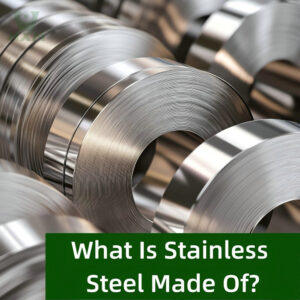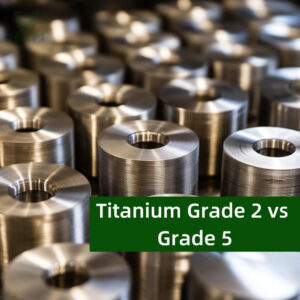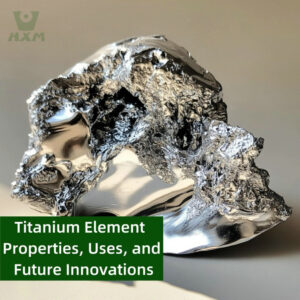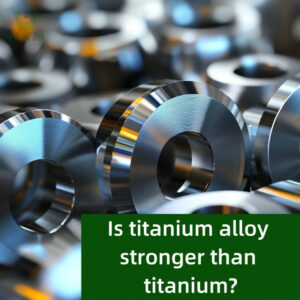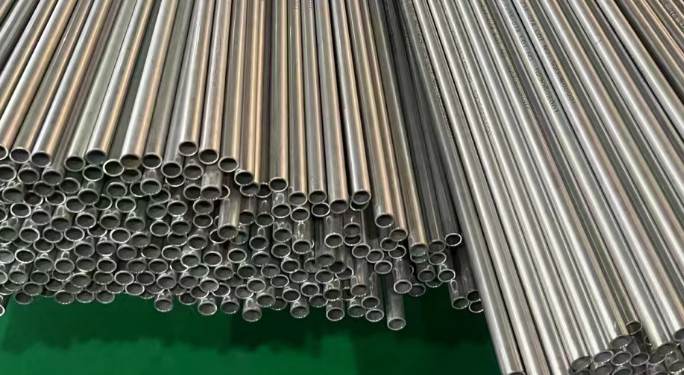
Among various alloys, Hastelloy C4 and C22 are two alloys that stand out for their exceptional corrosion resistance and durability in extreme environments. However, despite their similarities, there are significant differences between Hastelloy C4 and C22 that make them suitable for different industrial applications.
Hastelloy C4 VS Hastelloy C22
Let’s delve into the specifics of Hastelloy C4. Hastelloy C4 is a high-performance nickel-chromium-molybdenum alloy that exhibits remarkable corrosion resistance in a wide range of corrosive environments. Its composition, which includes nickel, chromium, and molybdenum, along with smaller amounts of other elements, allows it to perform exceptionally well in strong acids such as hydrochloric acid, nitric acid, fluorides, and sulfuric acid. This alloy’s corrosion resistance is further enhanced by its ability to resist stress corrosion cracking in high chlorine concentrations, making it a prime choice for applications where chloride-induced corrosion is a concern.
Moreover, Hastelloy C4’s mechanical properties are noteworthy. It possesses high strength and the ability to maintain its integrity even under high-temperature and high-pressure conditions. This combination of corrosion resistance and mechanical strength makes Hastelloy C4 an excellent candidate for use in chemical processing, pharmaceutical manufacturing, petrochemical operations, and food processing industries.
In the realm of environmental protection, Hastelloy C4 finds its application in various equipment, including wastewater treatment facilities, sewage storage tanks, and seawater desalination plants. Its ability to withstand the corrosive effects of various chemicals and substances makes it a vital component in these systems, ensuring their long-term reliability and efficiency.
Now, let’s turn our attention to Hastelloy C22. Hastelloy C22 is an all-around nickel-chromium-molybdenum-tungsten alloy that boasts even better overall corrosion resistance than Hastelloy C4 and other nickel-chromium-molybdenum alloys. Its unique composition, including nickel, chromium, molybdenum, tungsten, and other elements, confers upon it exceptional resistance to various forms of corrosion, including pitting, crevice corrosion, and stress corrosion cracking.
Hastelloy C22’s corrosion resistance is particularly noteworthy in oxidizing and moderately reducing environments. It demonstrates excellent resistance to wet chlorine, nitric acid, and oxidizing acids containing chloride ions. Additionally, it performs well in both reducing and oxidizing environments encountered during various industrial processes. This versatility allows Hastelloy C22 to thrive in challenging environments and find widespread application in multiple manufacturing settings.
The alloy’s resistance to a wide array of chemicals, including strong oxidizing agents such as ferric chloride, cupric chloride, chlorine, thermally polluted solutions (both organic and inorganic), formic acid, acetic acid, acetic anhydride, seawater, and salt solutions, further underscores its superiority in corrosion resistance.
Moreover, Hastelloy C22’s mechanical properties are also impressive. It exhibits high tensile strength and yield strength, along with good ductility, making it suitable for demanding applications that require both corrosion resistance and mechanical durability.
Due to its superior corrosion resistance and mechanical properties, Hastelloy C22 finds extensive application in the chemical and petrochemical industries, particularly in components and catalytic systems that come into contact with chloride-containing organic substances. Its ability to withstand the harshest of industrial environments ensures the longevity and reliability of critical equipment and systems.
Conclusion
In summary, the key differences between Hastelloy C4 and C22 lie in their corrosion resistance profiles and application areas. Hastelloy C4 excels in specific acidic environments and demonstrates good mechanical properties, making it suitable for a range of industrial applications. On the other hand, Hastelloy C22 offers even better overall corrosion resistance, particularly in oxidizing and reducing environments, and finds widespread use in the chemical and petrochemical industries.
Thank you for reading our article and we hope it can help you to have a better understanding of the differences between Hastelloy C4 and C22. If you are looking for Hastelloy C4 and C22 suppliers and manufacturers online now, we would advise you to visit Huaxiao Alloy.
As a leading supplier of Hastelloy Alloys from Shanghai China, Huaxiao Alloy offers customers high-quality Hastelloy products such as Hastelloy C4 and C22, Hastelloy C276, Hastelloy C2000, and Hastelloy B2 at a very competitive price.
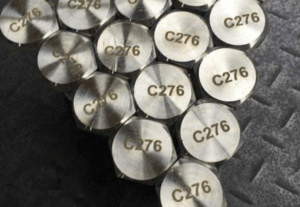
Hastelloy C-276 belongs to nickel-molybdenum-chromium-iron-tungsten nickel-based alloy, which is one of the most corrosion-resistant modern metal materials.
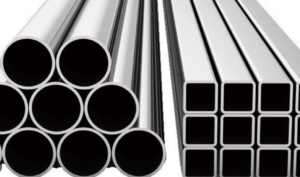
Hastelloy X is a nickel-based superalloy known for its exceptional high-temperature strength and oxidation resistance.
What is Hastelloy C276?
Hastelloy C-276 is a nickel-molybdenum-chromium alloy with added iron and tungsten, designed for exceptional corrosion resistance in a wide range of aggressive chemical environments. It is widely used in industries requiring protection from strong oxidizing and reducing agents, including the chemical processing, pollution control, and marine sectors.
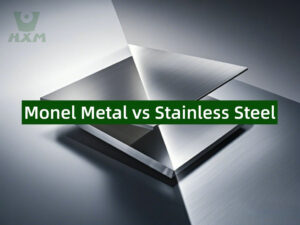
Monel Metal vs Stainless Steel
The debate between Monel Metal vs Stainless Steel is critical for engineers and procurement specialists seeking optimal materials for industrial projects. As a premier alloy supplier and manufacturer, Huaxiao-Alloy breaks down their differences, applications, and selection criteria to empower your decision-making.

How to Calculate the Weight of Steel Plate?
Learn to calculate steel plate weight with formulas, examples, and free tools. Avoid common mistakes and ensure accuracy for projects.
Why Choose Huaxiao Alloy?
In summary, The primary difference between Hastelloy C4 and C22 lies in their chemical compositions and corrosion resistance. Hastelloy C4 is optimized for strong reducing environments and high thermal stability, making it ideal for applications involving hot mineral acids. In contrast, Hastelloy C22 offers superior resistance to a broader range of oxidizing and reducing agents, making it more versatile for handling mixed chemical environments. The choice between the two depends on the specific chemical and thermal conditions of the application.
Thank you for reading our article and we hope it can help you to have a better understanding of the differences between Hastelloy C4 vs C22. If you are looking for Hastelloy C4 & C22 suppliers online now, please don’t hesitate to contact Huaxiao Alloy.
As a leading supplier of Hastelloy Alloys from Shanghai China, Huaxiao Alloy provides customers with Hastelloy C2000, Hastelloy B3 (UNS N10675), Hastelloy D205, Hastelloy G30 (UNS N06030), Hastelloy B2, Hastelloy X alloy, Hastelloy C4, Hastelloy C-276, and Hastelloy C22 at a very competitive price.

Hastelloy C-276 belongs to nickel-molybdenum-chromium-iron-tungsten nickel-based alloy, which is one of the most corrosion-resistant modern metal materials.

Hastelloy X is a nickel-based superalloy known for its exceptional high-temperature strength and oxidation resistance.
Hastelloy C4 and C276 are both nickel-molybdenum-chromium alloys, but they differ in composition, properties, and applications:
-
Chemical Composition:
- C4 contains lower iron and higher nickel content compared to C276, resulting in enhanced thermal stability.
- C276 contains tungsten, which improves corrosion resistance in reducing environments.
-
Corrosion Resistance:
- C4 is optimized for strong reducing environments and high thermal stability, making it suitable for handling hot mineral acids like hydrochloric acid and sulfuric acid at elevated temperatures.
- C276 has broader resistance, performing well in both oxidizing and reducing environments, and is resistant to pitting and crevice corrosion in chloride-containing solutions.
-
Applications:
- C4 is used in chemical processing where high temperatures and concentrated acids are common.
- C276 is more versatile and widely used in pollution control, marine applications, and chemical industries due to its broader chemical compatibility.
Hastelloy C (a general name for the earlier versions of the alloy, such as C or C276) and C22 differ in corrosion performance and applications:
-
Chemical Composition:
- C22 includes higher chromium content compared to earlier Hastelloy C alloys, enhancing resistance to oxidizing agents.
- Hastelloy C alloys (like C or C276) are designed for reducing conditions but lack some of the advanced oxidizing resistance of C22.
-
Corrosion Resistance:
- C22 offers superior performance in oxidizing environments, such as nitric acid or ferric chloride solutions.
- Earlier Hastelloy C alloys primarily excel in reducing environments but may be less effective against strong oxidizers.
-
Applications:
- C22 is ideal for handling mixed chemical environments involving both oxidizing and reducing agents, often found in modern chemical and pharmaceutical industries.
- Hastelloy C is typically limited to specific reducing chemical applications.
Hastelloy C4 is a nickel-molybdenum-chromium alloy with enhanced thermal stability and resistance to strong reducing agents.
-
Key Features:
- High resistance to reducing acids, such as hydrochloric acid, sulfuric acid, and phosphoric acid.
- Outstanding thermal stability up to 650°C, making it suitable for hot chemical environments.
- Resistant to stress corrosion cracking and intergranular corrosion.
-
Applications:
- Chemical reactors, heat exchangers, and piping systems handling hot mineral acids.
- Industries requiring corrosion resistance at elevated temperatures, such as chemical processing and pollution control.
Equivalent materials to Hastelloy C4 include:
-
International Standards:
- UNS N06455
- DIN 2.4610
-
Similar Alloys:
- Inconel 625 (for similar corrosion resistance in certain applications)
- Alloy 22 (broader chemical compatibility, especially in mixed environments)
Each alloy has specific advantages, so the best choice depends on the chemical and thermal conditions of the application.
Hastelloy C276 is widely recognized for its exceptional performance in challenging environments.
- Key Advantages:
- Broad Corrosion Resistance: Handles oxidizing and reducing environments, including hydrochloric acid, sulfuric acid, and wet chlorine gas.
- Resistance to Pitting and Crevice Corrosion: Performs exceptionally in chloride-containing solutions.
- Thermal Stability: Withstands temperatures up to 1000°C (1830°F) in corrosive environments.
- Good Weldability: Resistant to corrosion in weld heat-affected zones without requiring post-weld heat treatment.
- Versatility: Suitable for chemical processing, marine, pollution control, and pharmaceutical applications.
Yes, Hastelloy C22 is compatible with hydrochloric acid (HCl).
-
Performance in HCl:
- Excellent resistance to concentrated HCl at moderate temperatures.
- Provides superior protection against pitting and crevice corrosion caused by chloride ions.
-
Limitations:
- At higher concentrations and elevated temperatures, proper assessment is required to confirm suitability.
- For highly aggressive conditions, Hastelloy C276 may offer comparable performance.
C22’s versatility makes it ideal for handling hydrochloric acid in industries like chemical processing and waste treatment.

